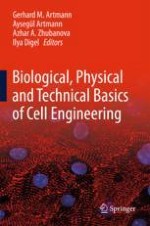2018 | OriginalPaper | Chapter
A Collagen-Hyaluronic Acid Matrix for Stem Cell Culture
Authors : Euisung Chung, Geajin Yoon, Hwal (Matthew) Suh
Published in: Biological, Physical and Technical Basics of Cell Engineering
Publisher: Springer Singapore
Activate our intelligent search to find suitable subject content or patents.
Select sections of text to find matching patents with Artificial Intelligence. powered by
Select sections of text to find additional relevant content using AI-assisted search. powered by
